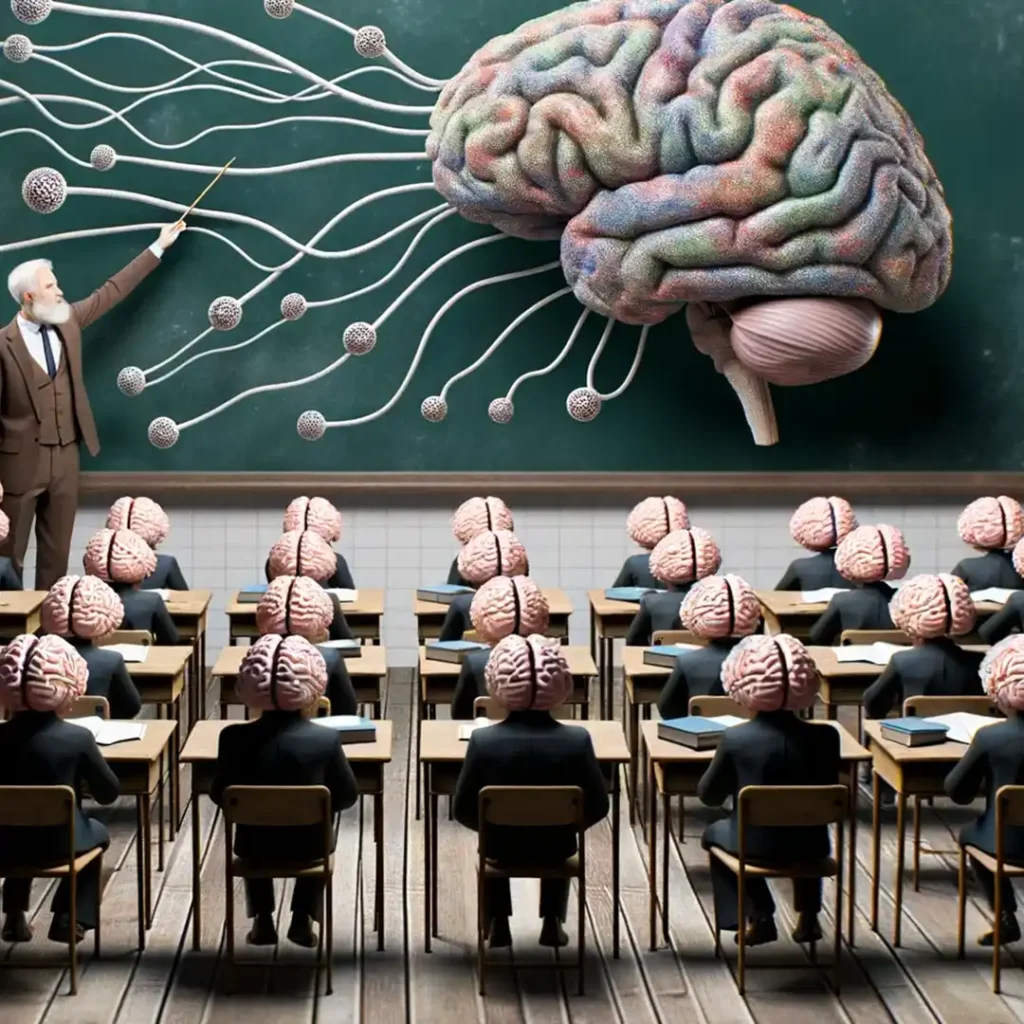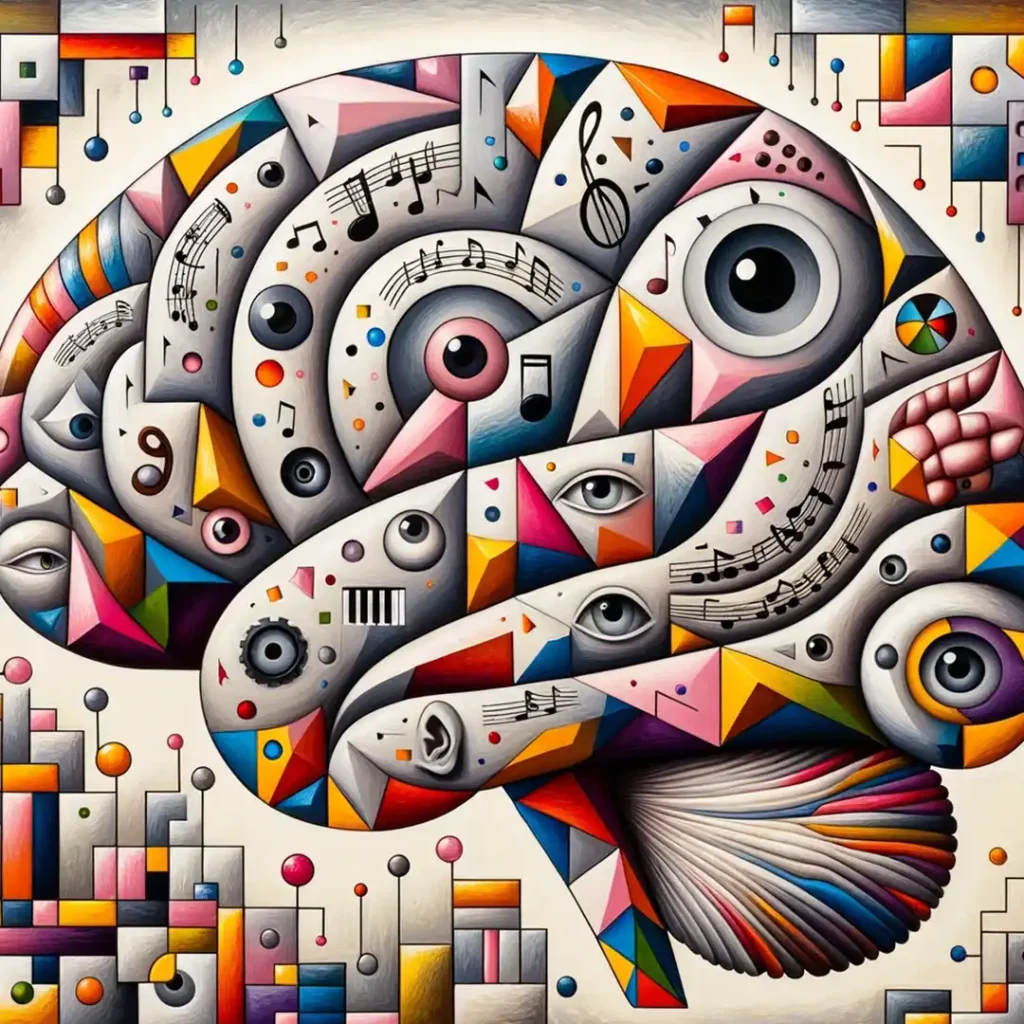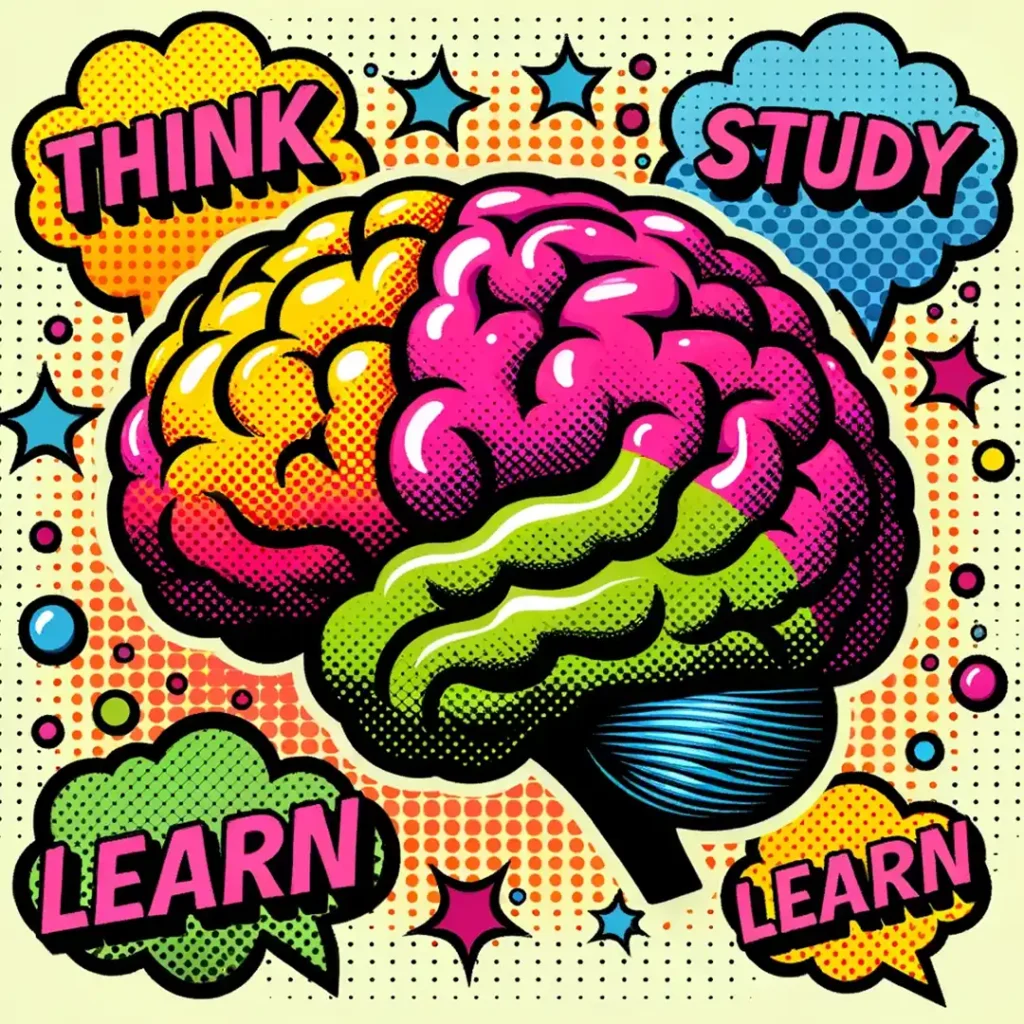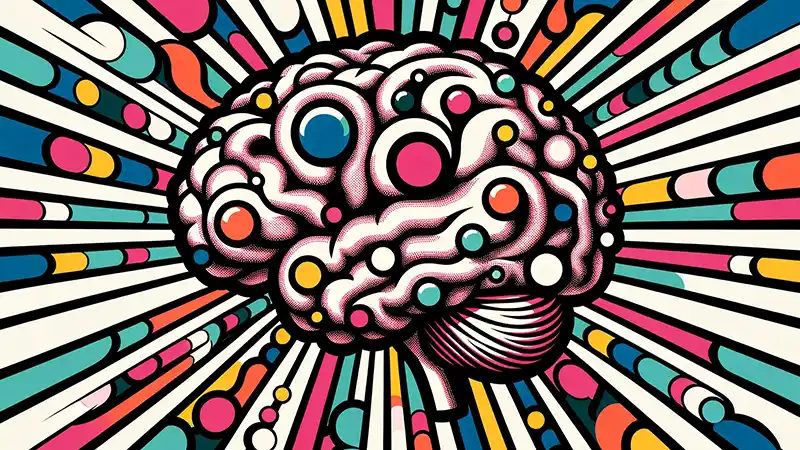In the vast and evolving world of education, one of the most promising frontiers lies in the intersection of brain-based learning and differentiated instruction. But what exactly are these concepts and why are they so pivotal for modern educators?
Differentiated Classrooms: Tailoring Education to Every Learner
At the heart of differentiated instruction is a simple, yet powerful premise: not all students learn the same way. Differentiated classrooms acknowledge and embrace this diversity, adjusting teaching methodologies, content, and pacing based on individual learners’ needs. This personalized approach ensures that each student is engaged, challenged, and supported in their learning journey, leading to more effective and inclusive educational experiences.
Brain-Based Learning: Where Neuroscience Meets Education
Brain-based learning isn’t just another educational buzzword. It’s an approach rooted in the understanding that educational strategies can be optimized when they align with how the brain naturally learns. By leveraging insights from neuroscience, educators can craft lessons that resonate with the brain’s innate processes, leading to better retention, understanding, and overall learning outcomes.
For instance, research has shown that our brains are wired to retain information better when presented in stories or when connected to prior knowledge. Similarly, active learning experiences, such as hands-on projects or discussions, activate more areas of the brain than passive methods like lectures, leading to deeper understanding and retention.
The Convergence: Why It Matters
When we merge the principles of differentiated instruction with the insights of brain-based learning, the results can be transformative. Imagine a classroom where lessons are not only tailored to each student’s unique needs but also optimized for how their brains naturally function. Such an environment not only fosters individual growth but also promotes a deeper, more lasting understanding of content.
Background on Neuroscience and Learning
Education, at its core, revolves around the brain. With advances in neuroscience, we now have unprecedented insights into the brain’s mechanisms, shaping how we approach education.
Basic Principles of How the Brain Learns
Neuroplasticity: Perhaps the most empowering discovery in neuroscience is neuroplasticity—the brain’s ability to reorganize itself by forming new neural connections throughout life. This means that learning doesn’t merely fill our brains with information; it physically changes the brain’s structure, highlighting the profound impact of educational experiences.
Emotion and Learning: The emotional centers of the brain, particularly the amygdala, play a crucial role in learning. Positive emotions can enhance memory retention, while negative emotions can hinder it. This underscores the importance of creating a positive, supportive learning environment.
Active Engagement: The brain learns best when actively engaged. Whether it’s solving problems, participating in discussions, or creating projects, these active processes stimulate multiple areas of the brain, leading to stronger neural connections and more profound learning.
Pattern Recognition: Our brains are hardwired to recognize and create patterns. This is why concepts presented in a structured, organized manner, or lessons that tie new information to prior knowledge, are more effectively absorbed and retained.
Connection Between Brain Functionality and Educational Strategies
Understanding these basic principles provides a roadmap for effective educational strategies:
Adaptable Learning Paths: Recognizing neuroplasticity, educators can design curriculums that adapt to individual student progress, allowing for areas of strength to be harnessed and areas of challenge to be addressed more intensively.
Emotionally Supportive Environments: Given the strong link between emotion and learning, schools and teachers must prioritize building classrooms where students feel safe, supported, and motivated.
Hands-on Learning Experiences: Traditional lecture-based approaches can be complemented or replaced with more interactive methods, such as project-based learning or group discussions, tapping into the brain’s preference for active engagement.
Structured Lesson Plans: By presenting information in a clear, patterned manner and connecting new concepts to prior knowledge, educators can harness the brain’s natural inclination for pattern recognition, making lessons more memorable and impactful.
Benefits of Brain-Based Learning in Differentiated Classrooms

The union of brain-based learning and differentiated instruction promises an innovative approach to education. By aligning teaching methods with the brain’s natural functions and adapting them to individual students, the potential for transformative benefits is vast.
Enhanced Engagement
Tapping into Students’ Interests: One of the cornerstones of brain-based learning is relevance. When lessons resonate with a student’s personal interests or real-world experiences, they become inherently more engaging. For instance, a lesson on geometry can use real-world examples like designing a skatepark or creating a video game level, depending on what piques the student’s interest. This personalized approach not only captures attention but also makes the learning experience more meaningful.
Role of Neuroplasticity in Fostering Engagement: As we’ve discussed, neuroplasticity allows the brain to reorganize and adapt. When students are consistently engaged, the brain forms stronger and more numerous neural connections related to the learned material. Over time, this results in a heightened sense of curiosity and a deeper passion for learning, creating a positive feedback loop of engagement and understanding.
Improved Retention and Recall
Mechanisms Behind Better Memory: Neuroscience-backed methods prioritize active learning and emotional connection. For example, when students are tasked with projects or discussions, they utilize various brain regions, leading to a richer neural imprint. Additionally, if an emotional connection—whether joy, relevance, or even a lightbulb moment of understanding—is made during the learning process, it can anchor the memory more securely.
Neuroscience-Backed Techniques for Recall: Techniques like spaced repetition, where content is reviewed at increasing intervals, and elaborative interrogation, where students explain concepts in their own words, are rooted in our understanding of the brain’s memory processes. By incorporating these strategies, educators can significantly boost students’ retention and recall abilities.
Facilitation of Individual Learning Styles
Catering to Diverse Learners: Brain-based learning recognizes that every brain is unique. Some students might be visual learners, while others are more kinesthetic or auditory. By leveraging neuroscience insights, educators can design lessons that cater to these diverse learning styles. For instance, a history lesson can be taught using visual timelines, storytelling, and hands-on activities, ensuring that each student’s learning preference is addressed.
Tailoring Approaches Based on Cognitive Profiles: Beyond just learning styles, students also differ in their cognitive strengths and weaknesses. Some might excel in analytical thinking while struggling with spatial tasks. Brain-based learning in a differentiated classroom allows educators to tailor instruction based on these cognitive profiles, ensuring that each student is taught in a way that aligns with their inherent strengths.
Practical Approaches and Techniques

The synergy of brain-based learning and differentiated instruction isn’t just theoretical. It can manifest in the classroom through tangible strategies and activities that boost engagement, retention, and overall learning outcomes.
Strategies for Differentiated Instruction
Mind Mapping: This visual tool allows students to chart out their understanding of a topic, drawing connections and recognizing patterns. It caters to visual learners and encourages holistic understanding, aligning with the brain’s propensity for pattern recognition.
Dual Coding: Combining verbal information with visuals—like infographics, diagrams, or even physical gestures—can enhance retention. This approach plays into the brain’s ability to process and remember information better when presented through multiple channels.
Feedback Loops: Regular, timely feedback ensures that students understand the content and can correct misconceptions early. Neuroscience shows that immediate feedback stimulates the brain in a manner that promotes learning and memory retention.
Chunking Information: Breaking down complex topics into smaller, more digestible “chunks” caters to the brain’s working memory capacity. By delivering information in bite-sized segments, educators can ensure better understanding and retention.
Classroom Activities and Exercises to Support Brain-Based Learning
Brain Gym Exercises: Simple physical exercises, like crossing one’s arms or touching opposite toes, can activate both hemispheres of the brain, promoting alertness and enhancing cognitive function.
Storytelling Projects: Given the brain’s affinity for narratives, students can be tasked with turning lessons into stories or plays. For instance, a biology lesson on cell function can become a narrative where different cell parts are characters with specific roles.
Sensory Stations: Create stations where students can learn through touch, sight, sound, and even smell. For a lesson on ecosystems, one station could have textures representing different terrains, while another could play sounds from various habitats.
Memory Palace Technique: This ancient mnemonic device involves associating information with specific locations in a familiar setting, like a student’s home. It taps into the brain’s spatial memory capabilities and can be used to memorize complex sequences or lists.
Role-playing and Simulations: Emulating real-world scenarios allows students to immerse themselves in a topic actively. For history, students can reenact historical events, enabling them to experience and understand the past’s emotions and intricacies.
Challenges and Considerations

As with any innovative educational approach, integrating brain-based learning into differentiated classrooms isn’t without its challenges. Acknowledging and preparing for these hurdles is crucial for educators aiming to harness the full potential of this synergy.
Potential Hurdles When Integrating Brain-Based Learning
Overwhelm with Information: The realm of neuroscience is vast, and trying to incorporate all its insights can be daunting. Educators might feel overwhelmed by the plethora of techniques, strategies, and findings, unsure of where to begin or how to integrate them effectively.
Misinterpretation of Neuroscience Research: Not all “brain-based” claims are equal. There’s a risk of misinterpreting or oversimplifying complex neuroscience concepts, leading to strategies that don’t truly align with accurate brain science.
One-Size-Fits-All Trap: While brain-based strategies are generally effective, there’s a danger in assuming they’ll work universally. Students are diverse, and what resonates with one might not necessarily engage another.
Resource Constraints: Implementing some brain-based strategies, especially hands-on activities or tech-intensive approaches, can be resource-heavy. Not all educational environments might have access to necessary tools or materials.
Tips for Overcoming These Challenges
Start Small and Scale Gradually: Rather than diving headfirst, educators can begin by incorporating one or two brain-based strategies, assessing their effectiveness, and then slowly integrating more as they become comfortable.
Continuous Professional Development: Regular training sessions or workshops focused on neuroscience and education can ensure that educators are up-to-date with the latest findings and understand them accurately.
Personalized Application: Even within brain-based learning, differentiation is key. Teachers should observe how students respond to specific strategies and tweak their approach based on individual feedback and outcomes.
Collaboration and Sharing: Teachers can collaborate, sharing resources, strategies, and insights with one another. This collective approach can help in pooling resources and navigating challenges together.
Seek Feedback: Actively seeking feedback from students can provide invaluable insights into what’s working and what’s not. This iterative approach ensures that teaching methods are continuously refined and optimized.
Conclusion
The intricate dance between neuroscience and education is a testament to how far we’ve come in understanding the complexities of the human mind and its immense potential for learning. Brain-based learning isn’t just a passing trend; it’s a profound realization of how aligning education with the brain’s natural processes can create transformative learning experiences.
Differentiated classrooms, which celebrate the uniqueness of every student, find a powerful ally in neuroscience-backed strategies. From enhanced engagement and retention to catering to diverse learning styles, the benefits are manifold. However, as with any pioneering approach, challenges exist. Yet, with awareness, collaboration, and continuous refinement, these hurdles can be navigated.
To all educators reading this: the future of education beckons with promise. Delve into the world of neuroscience, equip yourself with its insights, and integrate them into your classrooms. In doing so, you won’t just be teaching; you’ll be revolutionizing the way our next generation learns, thinks, and thrives.
Further Reading
“The Brain-Targeted Teaching Model” by Mariale Hardiman – An insightful dive into how educators can design lessons based on how the brain learns best.
“Differentiation and the Brain: How Neuroscience Supports the Learner-Friendly Classroom” by David A. Sousa and Carol Ann Tomlinson – A perfect fusion of differentiated instruction and brain-based learning, providing educators with practical tools and techniques.
“Brain Matters: Translating Research into Classroom Practice” by Patricia Wolfe – An exploration of how teachers can transform their classrooms by applying brain research.


